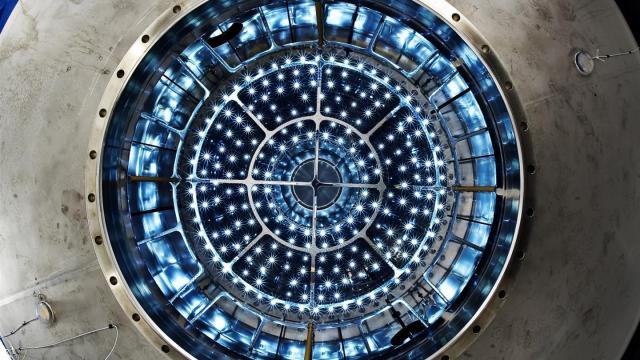Weather is probably harder to understand than particle physics, given the numerous complexities that influence Earth’s atmosphere. But one researcher has published a controversial new paper that examines just how much high-energy, interstellar particles can affect Earth’s climate.
Henrik Svensmark at the Danish National Space Institute has long pushed a theory called “cosmoclimatology,” which posits that high-energy particles from outer space can influence the climate here on Earth. His group has published new experimental research furthering the idea. But there’s a big difference between an interesting lab experiment and a knockout piece of evidence for an alternative cause to greenhouse gas-induced climate change.
Svensmark’s new paper comes from experiments in an eight-cubic-meter (7,571l) steel tank. By increasing the amount of electrically charged particles passing through the chamber, they were able to get more clouds to form out of teeny solid and liquid particles suspended in the chamber. Combining this with scientific modelling, they came up with further evidence that charged particles from space might influence the weather.
Naturally, this has come with hype, and implications that more cosmic rays might mean a cooler climate, and fewer could lead to a warmer climate. Svensmark has published previously on “cosmoclimatology,” and climate change deniers have used his work to support their otherwise unsupported beliefs. He has suggested, implausibly, that his theory on the cause of climate change is at least as scientifically sound as global warming caused by greenhouse gas emissions. This idea has been further adopted by climate change-denying groups, reports Grist.
Hamish Gordon, research fellow at CERN in Geneva, Switzerland, works on a similar experiment called CLOUD, whose goal is to study this exact thing. Gordon did write in a statement that the experiment itself offers “an interesting and plausible result,” and “if it stands up to more detailed scrutiny it may prove an important contribution to aerosol microphysics.” But he felt that the news has blown his statements and the experiment’s conclusions out of proportions. He took issue with a published statement of Svensmark’s: “Finally we have the last piece of the puzzle explaining how particles from space affect climate on Earth.”
Gordon told Gizmodo that this was an extravagant claim, and that the case isn’t closed. He noted that the cloud growth rates were only enhanced by up to 5%. “In the climate of the last few thousand years, this can make no appreciable difference to overall cloud-seeding particle concentrations in the atmosphere or to temperature.”
Recent research from the CLOUD experiment as a whole stands in contrast to Svensmark’s results, and found that, given the present day atmosphere and all of its particles, “cosmic ray intensity cannot meaningfully affect climate via nucleation.” Basically, particles here on Earth released by trees and humans have a much stronger influence on cloud formation and creating Earth-cooling clouds.
It definitely appears that charged particles have some effect on cloud formation in a lab, sure. But global climate change can’t been explained away that easily — especially given the truckloads of evidence that humans are driving it by emitting greenhouse gases.
